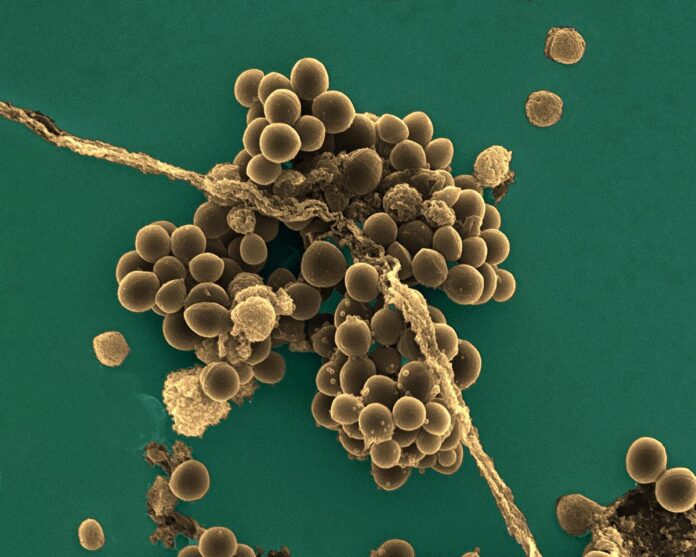If you fear artificial intelligence (AI) and its potential to destroy humanity, this story may give you pause. Why? Because using deep learning, a form of AI, researchers at the Massachusetts Institute of Technology (MIT), have found a new drug to kill drug-resistant Staph infections.
A 2022 study published in the Lancet used health statistics from 2019 to show that 7.7 million deaths globally that year were linked to 33 types of bacterial infections. The number was only second to ischemic heart disease as the cause of death in humans. The five leading bacteria include Staphylococcus aureus (SA), Escherichia coli, Streptococcus pneumoniae, Klebsiella pneumoniae, and Pseudomonas aeruginosa accounting for almost 55% of the total.
The MIT researchers used AI to select and predict the best molecules for producing drug compounds that could work on killing SA. James Collins, Professor of Medical Engineering at the MIT Institute for Medical Engineering and Science, describes deep learning as “time-efficient, resource-efficient, and insightful.”
The results appear in the December 20, 2023 issue of Nature, and show that the deep-learning identified drug compounds kill methicillin-resistant SA. The researchers also report that they can see what the deep-learning AI is doing as it searches through millions of molecular combinations to find candidates that show good potency and very low toxicity when in contact with human cells to make them good antibiotic candidates.
SA causes skin infections, sepsis, a fatal bloodstream infection, and pneumonia in more than 80,000 people in the United States every year leading to 10,000 deaths. It is not the only targeted bacteria the MIT researchers are looking at through the lens of AI deep learning. Recently they identified a compound to treat the drug-resistant bacteria, Acinetobacter baumannii (AB) commonly found in hospitals.
Before the discovery of a potential drug compound to deal with SA, AI searches suffered from the “black box” effect. Black boxes don’t reveal how they draw their conclusions. But with SA research the deep-learning AI was wide open to see the connections and calculations the neural network was doing. The use of expanded datasets was key to training the AI and used 39,000 compounds and their chemical and molecular structures. Shuffling the atoms and bonds around also allowed the AI to discern in percentages the probabilities of antibacterial success.
A Monte Carlo algorithm was used. It relies on repeated random sampling to obtain numerical results and gets its name from the Monaco casino where it was first used to simulate roulette games. Monte Carlo works by generating large numbers of random samples to determine the probability of a desired output. The AI-deep learning used the algorithm to generate estimates of a molecule’s antimicrobial activity and predictions about which substructures of the molecule likely accounted for the activity. To predict human toxicity to identified compound candidates, the researchers trained three additional deep-learning models. The combination of these AIs provided a short list of desirable compounds that not only killed SA but also did no harm to humans.
Twelve million commercially available compounds were reviewed by the AI. It identified five class types exhibiting the right chemistry. A total of 280 were available for purchase off the shelf. These were tested with two showing considerable promise. Each showed in the laboratory that they could disrupt SA bacteria in infected mice by disrupting the electrochemical gradient across cellular membranes, critical to cell function. In exposure to human cells, there was no disruption.
The MIT results have been shared with Phare Bio, a nonprofit company that has participated in the project. The company and MIT will work on turning these promising compounds into a drug for clinical use. They will continue to work using AI deep learning to discover other candidates to fight drug-resistant bacteria. This should lead to new antibiotics to fight bacterial infections that no longer respond to the drugs we have in our current medical arsenal.









